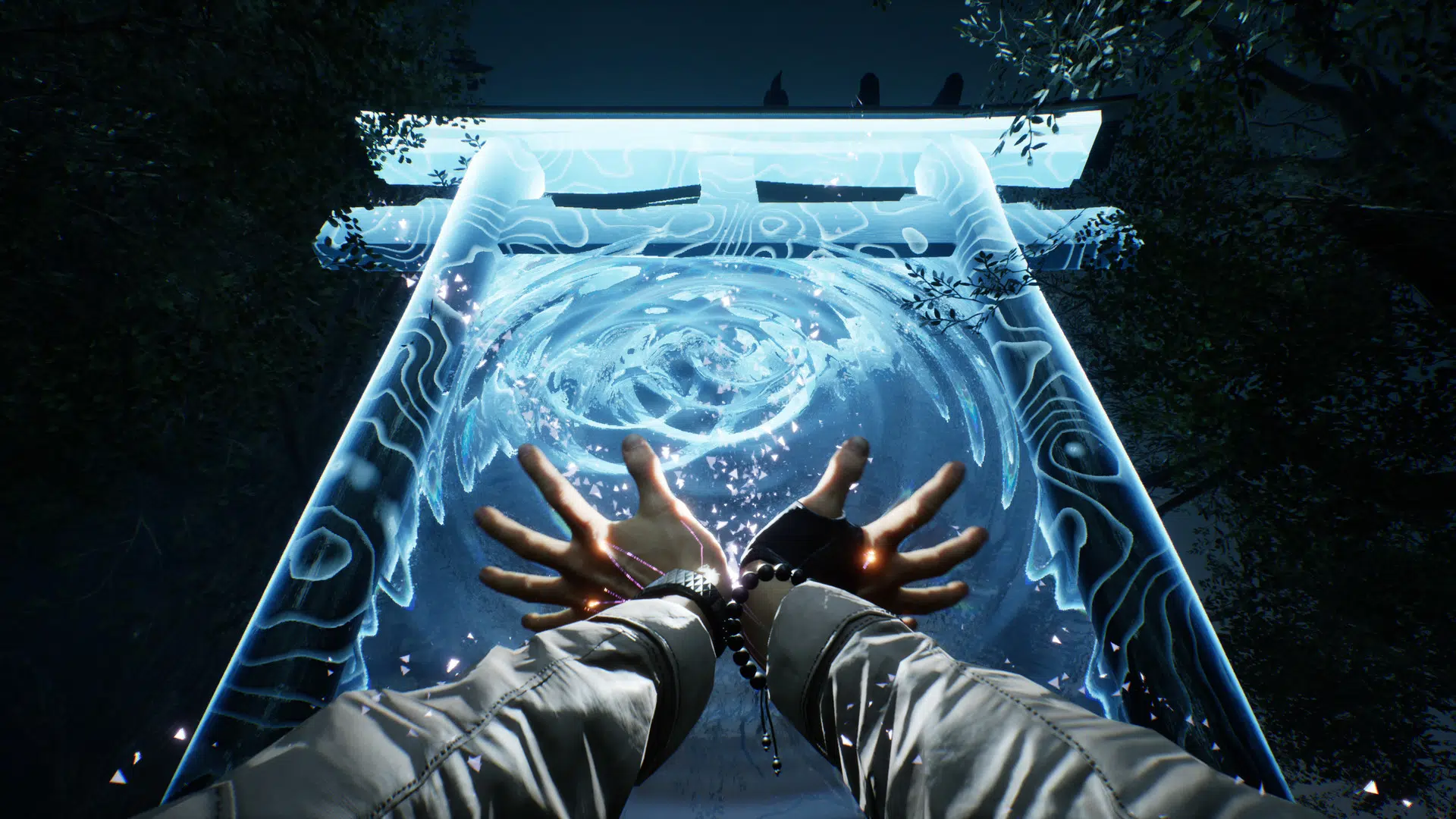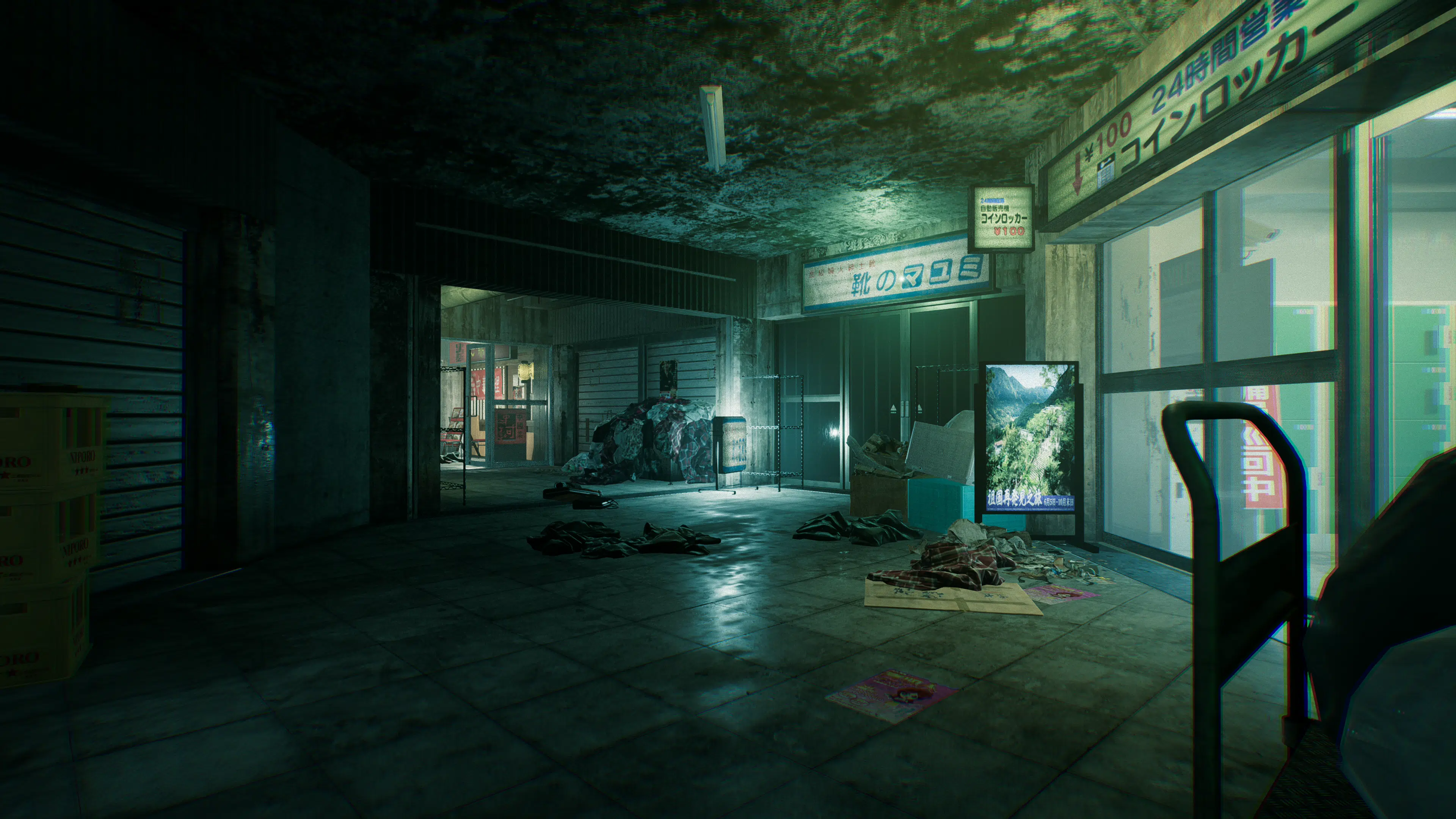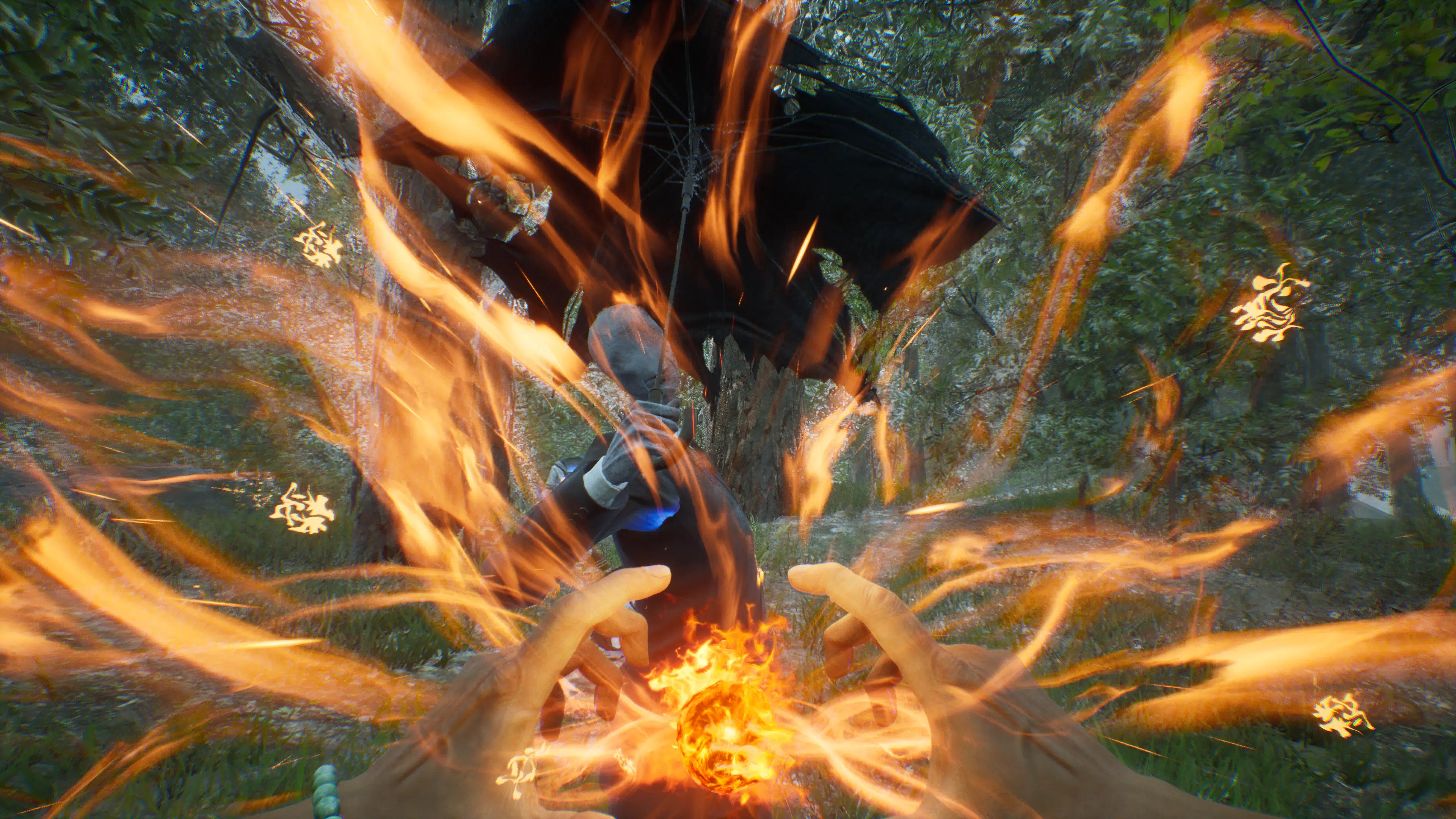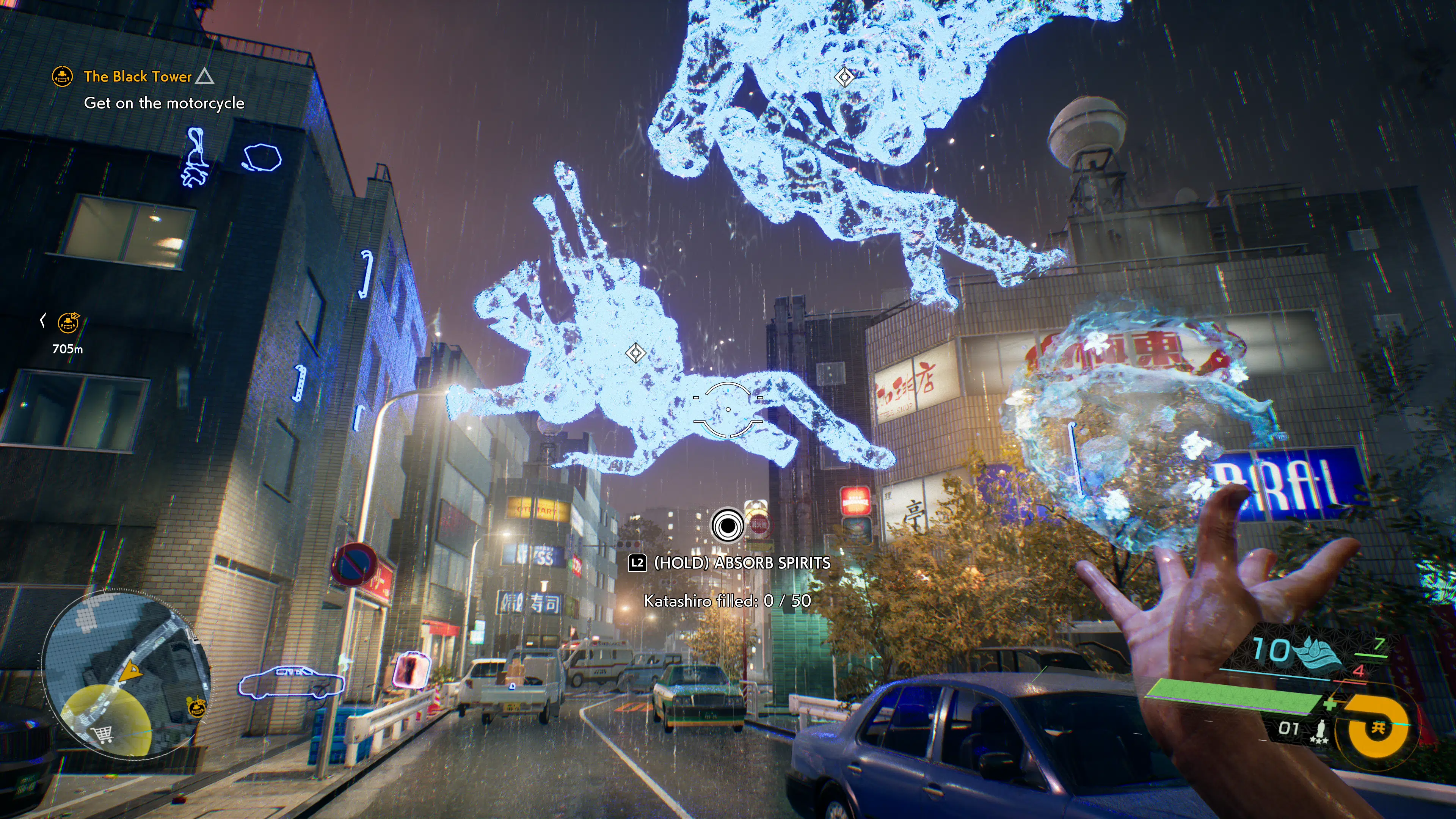It’s finally time to unravel the mystery behind Tango Gameworks latest, Ghostwire: Tokyo. Is this a worthy game by Tango that we didn’t see The Evil Within 3? The short answer: yes! Read on our Ghostwire Tokyo review to see why this is one evil you’ll want to tangle with.
An Evil Within the City
If you’ve been following Tango Gameworks’ Ghostwire: Tokyo over the years, then chances are, you probably still don’t know much about this game. It’s odd, I know, but I have to say it does feel a bit refreshing having to go into a game almost completely blind. This is perhaps one of the reasons why Tango Gameworks has been so reluctant to show it, as much of the game’s own plot is shrouded in a veil of shadow, leaving the task of uncovering it to the players themselves. It’s a mystery, and one that managed to get me invested from the very start.
In Ghostwire: Tokyo, this mystery is centered around a catastrophic event that nearly wipes out the population of Tokyo. A mysterious fog has swept the streets, claiming the soul of everyone caught in it. What was once a bustling city filled with the traffic of people living their daily lives, has suddenly become a ghost town. That is both metaphorical and literal as the city is flooded with nightmarish Yokais, eating up the trapped souls, and brutally murdering any remaining survivors.
It is here where we meet our protagonist, Akito, who finds himself on the brink of death, knocked out from all the panic and chaos that the fog had brought. Fortunately for him, a former spirit detective who goes simply by the name of KK is now a spirit, seeking a suitable dead body to possess. Unfortunately for KK, Akito isn’t as dead as he thought he was, leading to a battle over control between the two. However, their goals soon align as they are met by the game’s antagonist, Hannya, a mysterious mask wearer who possesses an incredible immense amount of supernatural powers.
Seeking a suitable vessel for his plans, Hannya and Akito’s fates soon cross as Hannya learns of Akito’s sister, who is currently alive, though in a comatose state. Things quickly get personal, with both Akito and KK agreeing that it would be best if they worked together. What unravels next is a tale filled with trust, betrayal, remorse, and death.
Contrary to Tango Gameworks previous work on The Evil Within franchise, Ghostwire: Tokyo takes a backseat on horror and instead presents gamers with a story that invokes reflecting on subjects of life and death. It’s a big change up, though in the narrative of it all, one that feels well crafted as the city itself booms with those reoccurring themes. Humans may have given the city of Tokyo a personality, but in their absence, a new one has arisen, completely driven by what is left — a city that flourishes in death and takes on a character of its own, and perhaps in the most terrifying of ways.
While the campaign of Ghostwire: Tokyo was an enjoyable experience to go through, without a question it’s the city itself and the captivating world that Tango Gameworks have managed to create that’s the star. There is an eeriness that creeps around every street walked, every corner turned, and every room explored that has a sense that there is something always watching. You know this feeling, the feeling you get when you decide to go out during the midnight hours, the dead silence that haunts the air. You’ve been down this road a thousand times during the day, yet something about it feels off this time. Paranoia sets in, despite there actually not being anything there.
There is no shock value in the way Ghostwire: Tokyo addresses its horror. No gruesome, gory, gash-filled monsters (well, there are Yokais but they aren’t scary) with hundreds of appendixes that are squirming around to provoke terror. No, this is a world that feels believable, a world that projects on a physiological level, leaving the scary parts entirely up to the player to interpret.
I loved it, even if the Yokais themselves weren’t scary due to how action orientated the gameplay is, there is something about this interpretation of Tokyo that makes me stop in my tracks as shadowy figures run across the screen, or strange gurgling sounds fill an alleyway. The mystery of not knowing what’s there. It is both beautiful, and terrifying at the same time.
Of course there is more to the world of Ghostwire that doesn’t rely on phycological thrills. While humans are gone, their spirits still are very present. This leads back to the idea of life and death, oftentimes when confronting these spirits, be it collecting them to help restore them back, or taking on the various side missions throughout Tokyo, each one has a story to tell, mostly dealing in their unfinished business. Some of them will ask you to retrieve items, while others to deal with an evil spirit of some sort. In essence, they all revolve around how people handle death. Some are peaceful in their presence, while others manifest and transform locations, trapping other spirits in their selfishness. Ultimately it’s your job to help them move on to whatever is next.
I found the side missions to be one of the more enjoyable aspects of Ghostwire, as they all felt uniquely designed to tell a different story. Some were as simple as reuniting a mother and child, while others more complex, such as freeing spirits. One mission in particular saw me face off against a hoarder. The building they were living in was filled to the brim with things they’ve collected, and it affected other residents in the area. It wasn’t a pretty sight, and the specter we were tasked with cleansing even altered the area to further alleviate their own behavior. It was neat, seeing both the real world and the supernatural blend together. Lots of moments like these are scattered throughout the entire game, making it well worthwhile to explore and do side content as you progress through the main mission.
It almost reminded me a bit of the Yakuza series. The main story is filled with emotional drama and twists that drive you to keep going, yet the side content deals with the lives of others, be that in a serious or wacky manner. Regardless, I believe there is a lot to reflect on the story and side mission, and I’m sure most of you will come to enjoy the journey it offers.
Getting Spiritual
So I’ve established that the world of Ghostwire: Tokyo, despite how beautiful, is a rather nightmarish one. Being that Akito is a human, he doesn’t have much of a fighting chance, or at least he wouldn’t have weren’t for his spirit companion KK.
KK’s backstory is a bit of a mystery, but all that matters is we know that he’s a detective that dabbles in the realm of the supernatural. Because of this, he has developed a range of abilities that have followed him into the afterlife, and therefore has given Akito a number of those powers in his possession to fend for himself.
Known as Ethereal Weaving, Akito has the ability to conjure up powerful elemental attacks out of thin air. These elemental abilities include water, fire, and wind, as well as expand in the use of Talisman which have a variety of effects such as shock traps, explosives, decoy, and more.
All of these run off an ammo system, and with the exception of Talismans, can be replenished by simply defeating an enemy or destroying one of the many destructible objects in the environments. Because of this, you are somewhat forced to play conservatively when facing off against enemies as the strongest abilities can’t endlessly be spammed. This creates somewhat of a strategy to how combat is approached as you’ll find some enemies weaker to specific types of elements.
Furthermore, if you aren’t the kind of player who likes the direct approach, there are alternatives such as going stealth. Now, I don’t believe you can beat the game like this (though prove me wrong if you can,) but it is nice having the option to sneak up behind a Yokai and perform stealth takedowns. In fact, I’ve used that form of style plenty of times throughout my playthrough, as not only did it help in keeping me alive longer, but as well as help replenish ammo for when I did need to go all out.
All in all, I enjoyed the combat of Ghostwire: Tokyo as it felt fun with a dash of style to it. The PS5’s Dualsense controller certainly feels great during combat as the haptics will vary in responses, and the triggers will feel differently depending on what abilities you use. Sadly though, in terms of each elemental power available, they are rather light in how much they can do. Once you’ve gotten a power, you will have essentially seen all they can do, that being their basic shot attack and charge ability. Sure, you can enhance these in the skill menu, but those are specific to increase ammo, faster firing rate, or higher damage, something that is also done with the beads you can equip.
That’s not to say that the combat wasn’t fun, because seeing all the crazy effects certainly is. I just wish there was more to these powers than what there currently is, though I suppose a potential sequel could improve on that.
There are also touchpad controls that are used to break seals. You could use the joystick, but either way I don’t think it felt all that responsive and came off annoying more than anything.
However, if there is one aspect of Ghostwire: Tokyo that I absolutely hated, then it’s the way one specific side activity is handled. Early on, you learn about transferring absorbing spirits, and transferring them into payphones. These spirits are scattered across the maps in all forms of verticality, and serve as a way to help you level up.
Think of them as coins, or orbs that are just on the map for the sake of giving players a reason to keep on playing. Typically I would be fine if just simply passing through them would collect them, but every single one — and there are hundreds — you have to stop and watch an absorption animation play out. It’s exhausting truthfully, and in my attempt to try and 100% the game, it was just utterly boring. It doesn’t help that you are limited in the amount of spirits that you can carry, forcing you to leave a spot and visit a pay phone and then go back. Unnecessary back and forth, though that is eliminated once you beat the game and get an item that transfers souls immediately after absorption rather than having to use a pay phone.
The rest of the side stuff and collectibles work, but those spirit ones just feel more of a hindrance than adding any actual value. Sure, they help you level up, but by the time you start going through this process, leveling would essentially be pointless. I would say if there wasn’t as many scattered around the map, then maybe I wouldn’t be bothered by them. It’s not a complaint that there is too much of this type of content, it’s a complaint of how it feels like it adds no true value; not like the side quests or relic collectibles that have lore drops. It’s uninteresting and clear padding to the game’s clock.
Then there’s the combat with the bow. Given that Ghostwire: Tokyo is essentially a first -person shooter, it’s odd to see that the only weapon in the game is so underutilized. There’s a section in the game where right after you get the bow you use it to clear up some corruption from a distance, but after that you never really use it again in terms of puzzles. That is especially true when most objects can be hit with the wind power.
Even during combat the bow is lackluster as aiming felt unwieldy. The enemies don’t move fast at all, yet somehow I found myself missing shots because they glided past the shot. It’s a last minute resort for sure, and thankfully you don’t get put up with it a whole lot as it was mainly used during small set pieces in the campaign. Still, I would have loved to see the bow better utilized. Upgrading it does help, but by the time you get to that point it feels a bit redundant.
The PS5 Advantage, and More
I already briefly discussed how the DualSense is used, but I wanted to shift my focus on one of the other areas that PlayStation has been hyping up. No, I’m not referring to the super quick speeds of the SSD, I’m talking about the 3D Tempest audio engine baked right into the console. One game specifically comes to mind of taking advantage of the engine, that being Returnal, but in the case of Ghostwire: Tokyo, I am absolutely astonished by the impressive implementation of sounds. Playing with a headset is a must, especially for those who own a PlayStation Pulse 3D headset.
Hearing animals in the background, footsteps, and ominous voices echoing down a corridor. It’s immersive, and adds a whole layer of spookiness to Ghostwire: Tokyo. This is especially more prominent during stealth moments as you can hear a Yokai expressing themselves in a wide range of emotions. Some are laughing, almost child-like, while others can be heard crying in pain. A big highlight especially is when all the street lights begin turning off, with a sweep of fog covering the street and a band of Yokai marching down it. You can hear the strikes of drums and other instruments play out, though if you listen closely you can almost feel the malicious intent these monsters bring with them. The sound work in Ghostwire: Tokyo is utterly fantastic, truly something you need to experience yourself.
Of course there is the incredible speeds of the SSD that the PS5 offers, though I will warn, expect to see loading screens, especially when transitioning from the exterior of a building to the interior. Thankfully, they’re very short, as is the time to respawn from a death. There may be loading screens, but you won’t be spending any more than a few seconds staring at them.
Now more on the technical side of things, Ghostwire: Tokyo is a bit interesting on how it approaches options. We’ve outlined it in our previous post, but to discuss a bit more again, Ghostwire: Tokyo features six graphical and performance modes on the PS5. These modes can essentially be broken into two groups, performance and quality, three for each one.
For quality, players can expect all the bells and whistles that graphics bring as the resolution is aimed at 4K, with Ray-tracing and other graphical enhancements, while running at a capped 30fps. The additional two modes remove that cap entirely, with the third adding V-Sync.
It’s the same story on the performance side, though as the name suggests, these modes are aimed at gamers who prefer steady performance, therefore removing ray-tracing and some other graphical improvements in favor of 60fps. The other modes also remove the cap, enabling frame rates higher than 60 with V-sync as one of the options.
Having played around with all the modes, I can tell you that for the most part, you’ll probably enjoy either using the base quality and performance, or the uncapped quality with V-sync. These modes seem to have offered the smoothest of experiences, with the uncapped quality with V-sync striking a balance between the two modes. Performance for the most part feels like it hits 60fps, but there are certain situations where we do see dips, even in quality. There is a specific enemy that has a charge attack that for whatever reason if you are near it, will tank the frame rate. Hopefully that gets addressed come release, or shortly after.
Quality mode, though I’m not a big fan of capped 30fps, does look stunning. Ray-trace reflections are in full force in this mode as the streets are littered with puddles, as well as the environment being rich in reflective material. It’s gorgeous to say the least.
The uncapped modes without V-sync are, well, unplayable – at least in the TV/monitor set up I had. It also doesn’t help that the PS5 doesn’t support VRR but I’ll get to that in a moment. The issue I had with these modes was that they were filled with nothing but screen tearing. The slightest movement would cause splits in the screen, which made me question why even include it. In fact why include the additional uncap frame-rate modes if they aren’t entirely ideal to play on. For PC gamers that’s not so much of an issue due to their open-ness, but for us console gamers we are bound to the closed platform consoles are. So again, why include these modes? Well, the answer to that lies in Tango Gameworks previous title, The Evil Within.
While not the most stellar of sequels, The Evil Within 2, a game initially built for last-gen consoles also featured an uncapped frame-rate option. Now like Ghostwire: Tokyo, playing with this mode wasn’t exactly the most ideal way. However, what this did was future-proof the title for newer hardware. This meant that Tango Gameworks didn’t need to go back and patch the game in order to support the newer consoles, those being the PS5 and Xbox Series. It’s the same idea here. Down the road when the PS5 does get VRR support, the game will already be able to take advantage of that feature. Of course, when the PlayStation 6 releases, Ghostwire: Tokyo will already be ready to take advantage of the power boost supplied from that console. No need for gamers to wait for a patch of some sort. It’s brilliant honestly, even if the experience isn’t quite ready for today.
Verdict
Tango Gameworks manages to embalm it’s player in a beautiful and enticing world that is known as Ghostwire: Tokyo. There is a sense of the unknown that shrouds this new, and interesting universe, and while I may have some issues, ultimately I believe the studio has laid out a solid foundation, for what is hopefully a start to a beautiful franchise.
The story will get you hooked, but the world itself will have you staying, searching for answers to those questions you dare not ask.
Score: 8.5/10
Pros:
- Tango Gameworks crafts a gorgeous world that takes on its own personality. Tokyo feels alive with a creepiness that you can’t shake off.
- Combat is fun, and stylish. Never felt bored by it, and higher difficulty allowed us to challenge ourselves.
- Side quests feel unique and are fun to take on. Never felt like I was repeating the same mission.
- Main story was fun, though we do wish it was a bit longer and dived into the characters more.
- Future-proof for consoles beyond the PS5.
Cons:
- Touchpad controls is a bit hit and miss, unresponsive at times.
- In world collectibles (specifically the spirits) can feel exhausting due to the quantity.
- Bow combat feels like a bit of a afterthought, which is a bummer because it’s the only weapon in the game.
- Light performance hitches on the base modes.
Ghostwire: Tokyo review code was provided by the publisher. Version tested PS5. You can read MP1st’s review and scoring policy right here.




